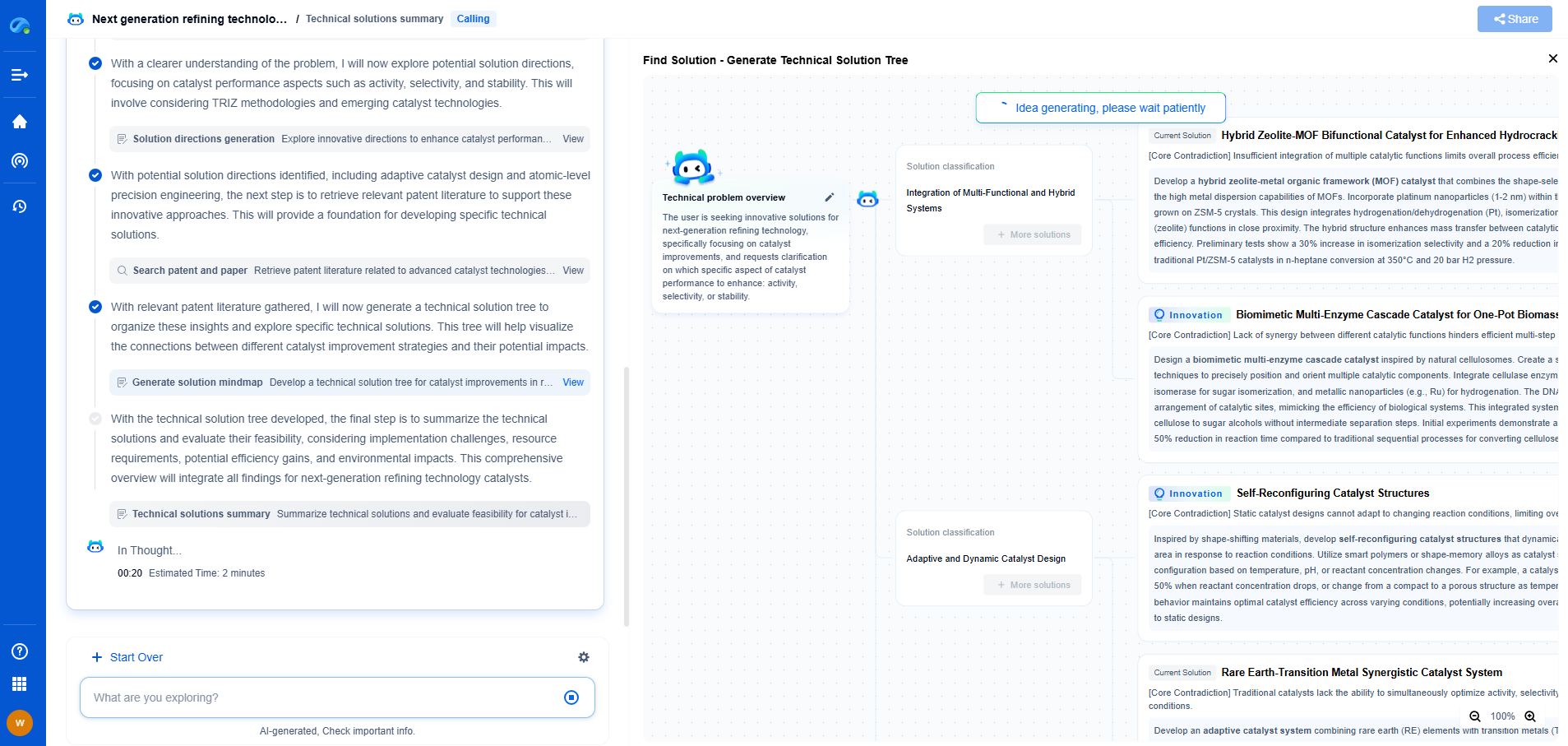Automotive Radar Components: 77GHz MMICs for ADAS
JUN 27, 2025 |
As the automotive industry advances towards more sophisticated and safer vehicles, Advanced Driver Assistance Systems (ADAS) have become essential. These systems aim to increase car safety and enhance the driving experience. Central to many ADAS technologies is automotive radar, which uses radio waves to detect the distance, speed, and angle of objects. Radar systems operate in various frequency ranges, but the 77GHz band has become the industry standard for automotive applications due to its superior accuracy and range resolution.
Why 77GHz for Automotive Radar?
The choice of the 77GHz frequency band for automotive radar is not arbitrary. This frequency provides several advantages that are particularly beneficial for ADAS applications:
1. **Higher Resolution**: The higher frequency allows for better resolution, enabling the radar to distinguish between multiple objects that are close together. This is crucial for applications like adaptive cruise control and collision avoidance.
2. **Smaller Antenna Size**: Higher frequencies allow for smaller antenna sizes, making it easier to integrate radar systems into cars without compromising design or aerodynamics.
3. **Reduced Interference**: Operating at 77GHz reduces interference from other systems and devices, ensuring more reliable operation in various environments.
The Role of MMICs in Automotive Radar Systems
Monolithic Microwave Integrated Circuits (MMICs) are pivotal in the performance of 77GHz radar systems. These circuits integrate all the components necessary for signal transmission and reception onto a single semiconductor substrate. Their role in automotive radar is critical for several reasons:
1. **Integration and Miniaturization**: MMICs allow for the integration of complex circuits in a compact form factor. This is essential for modern vehicles where space is at a premium.
2. **Performance and Reliability**: MMICs offer high performance with low power consumption, which is vital for maintaining efficiency and reliability in automotive radar systems.
3. **Cost-Effectiveness**: Although initially expensive, the mass production of MMICs has reduced costs, making advanced radar systems more accessible for a wider range of vehicles.
Applications of 77GHz MMICs in ADAS
The integration of 77GHz MMICs in radar systems has opened up numerous possibilities in ADAS technology. Here are some key applications:
1. **Adaptive Cruise Control (ACC)**: ACC systems rely on radar to maintain a safe distance from vehicles ahead, adjusting speed automatically. The accuracy of 77GHz radar is crucial for the smooth operation of these systems.
2. **Lane Change Assist**: By detecting vehicles in adjacent lanes, radar systems help drivers change lanes safely. The high resolution of 77GHz radar is essential for accurately identifying vehicles in blind spots.
3. **Collision Avoidance Systems**: These systems alert drivers to potential collisions and can even take evasive action if necessary. The rapid response and accuracy of 77GHz radar are critical for these life-saving interventions.
4. **Parking Assistance**: Radar-based parking sensors help drivers maneuver in tight spaces by providing precise distance measurements, enhancing both convenience and safety.
Challenges and Future Prospects
While 77GHz MMIC technology offers many advantages, challenges remain. The development of these systems requires significant investment in research and manufacturing capabilities. Additionally, ensuring the robustness of radar systems in various environmental conditions, such as rain or fog, is an ongoing challenge.
Looking ahead, the continued evolution of MMIC technology and radar systems promises even more advanced ADAS capabilities. Innovations such as machine learning and AI integration could further enhance radar performance, making future vehicles even safer and more autonomous.
Conclusion
In conclusion, 77GHz MMICs are at the heart of modern automotive radar systems, playing a crucial role in the functionality of ADAS technologies. As the demand for safer and more efficient vehicles grows, the importance of these components will only increase. The future of automotive radar looks promising, with ongoing advancements poised to revolutionize not only how we drive but how we experience mobility as a whole.
Unlock Next-Gen Innovation in Communication Technology with Patsnap Eureka
The field of communication technology is evolving at breakneck speed—from 5G and satellite systems to next-gen wireless protocols and quantum communications. Staying ahead demands more than just information—it requires strategic insights, real-time patent intelligence, and a deep understanding of technological trajectories.
Patsnap Eureka, our intelligent AI assistant built for R&D professionals in high-tech sectors, empowers you with real-time expert-level analysis, technology roadmap exploration, and strategic mapping of core patents—all within a seamless, user-friendly interface. Whether you're optimizing signal processing designs, navigating 3GPP standards, or exploring IP strategies for IoT and 6G networks, Eureka helps you move faster, think deeper, and innovate smarter.
Try Patsnap Eureka today—and see how it can transform the way you work across the entire communication technology innovation lifecycle.
- R&D
- Intellectual Property
- Life Sciences
- Materials
- Tech Scout
- Unparalleled Data Quality
- Higher Quality Content
- 60% Fewer Hallucinations
Browse by: Latest US Patents, China's latest patents, Technical Efficacy Thesaurus, Application Domain, Technology Topic, Popular Technical Reports.
© 2025 PatSnap. All rights reserved.Legal|Privacy policy|Modern Slavery Act Transparency Statement|Sitemap|About US| Contact US: help@patsnap.com

